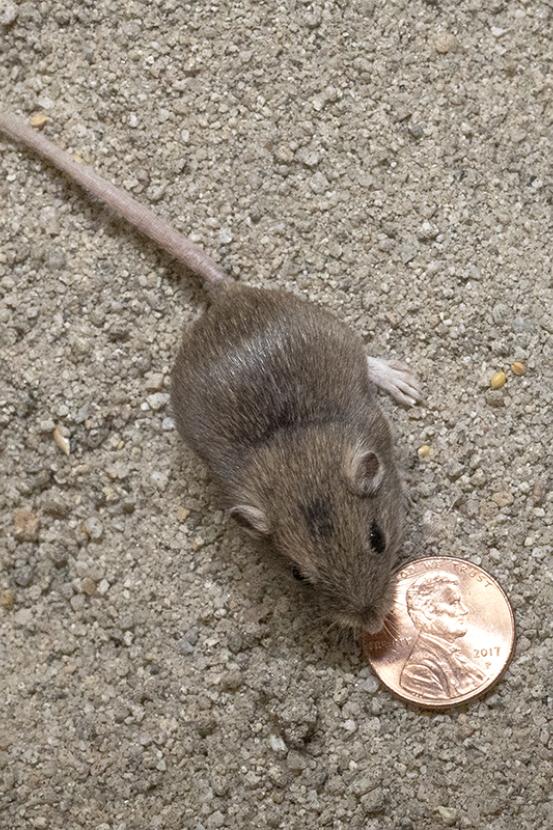
In the quiet, sandy soils of Southern California’s coastal sage scrub, a tiny creature carries a monumental legacy. The Pacific pocket mouse Perognathus longimembris pacificus, one of the smallest mammals in North America, is also one of the most critically endangered. Weighing less than a nickel, this mouse has endured decades of habitat loss and degradation, invasive predators, and loss of genetic diversity, all of which have pushed it to the brink of extinction. Yet 2024 marked a year of unparalleled hope and discovery, as efforts to recover this species reached historic milestones.
From Extinction to Rediscovery
The Pacific pocket mouse once roamed an approximately 124-mile expanse of coastal Southern California, thriving in 30 documented localities during the 1930s. It played a vital ecological role, dispersing native seeds, aerating soil, and cycling nutrients within its habitat. However, urbanization and other human-driven activities caused devastating habitat loss, leading to widespread population declines, and by the mid-20th century, the species was thought to be extinct. For two decades, the Pacific pocket mouse went undetected—until 1993, when it was rediscovered in a stroke of serendipity. Recognizing the urgency of its plight, it was emergency listed as endangered under the United States’ Endangered Species Act, sparking a collaborative effort to ensure its survival.
A Legacy of Decline but Resilience
Today the species persists in just three small, isolated populations: in Dana Point, Santa Margarita, and South San Mateo. Habitat destruction, high fire frequency, invasive species, extended drought, and predation by nonnative animals have pushed the species to the brink, leaving fewer than approximately 90 breeding individuals across its remaining range. Low genetic diversity and inbreeding have further compounded the species’ plight. Genetic studies reveal a loss of diversity with the Dana Point population having roughly half of the diversity of mice in the 1990s. Inbreeding and low genetic diversity further threaten population persistence. These challenges underscore the urgency of the U.S. Fish and Wildlife Service’s recovery plan, which focuses on stabilizing and growing existing populations and establishing new ones to rebuild genetic diversity and resilience.

San Diego Zoo Wildlife Alliance is partnering with Marine Corps Base Camp Pendleton for the newest Pacific pocket mouse reintroduction project.
A Bold Vision Takes Shape
San Diego Zoo Wildlife Alliance’s Pacific Pocket Mouse Conservation Breeding and Reintroduction Program was launched in 2012 as an ambitious response to the crisis. Over the past decade, we have made remarkable strides, including developing specialized husbandry protocols and breeding techniques; learning about species behavior, ecology, physiology, and genetics to prepare mice for life in native habitats; and selecting, restoring, and managing reintroduction sites to ensure suitable habitat. These efforts have culminated in the release of over 500 conservation program-bred mice. In 2016, the first reintroduced population was initiated at Laguna Coast Wilderness Park, where careful monitoring and research has provided invaluable insights into the factors that affect reintroduction success. This success set the stage for the program’s next challenge: establishing a second population.
A New Chapter at Wire Mountain
In 2024, the program partnered with Marine Corps Base Camp Pendleton to release 90 Pacific pocket mice at Wire Mountain, a step that represents the largest single-year release in the program’s history. This site, carefully selected for its suitable habitat and strategic location within the mouse’s historical range, offers the species a fresh start. The results have been exciting. By the end of the summer, our monitoring revealed high short-term survival, and most mice were reproducing. One hundred wild-born offspring—key indicators of reintroduction success—were documented at the site, marking a pivotal achievement in the species’ recovery journey.

A U.S. penny offers size perspective for an adult Pacific pocket mouse.
Collaboration: The Heart of Recovery
The Pacific Pocket Mouse Working Group, an interagency coalition, has been instrumental in the species’ recovery. Members include federal agencies like the U.S. Fish and Wildlife Service, U.S. Marine Corps, U.S. Geological Survey, state and county organizations such as California Fish and Wildlife, University of California, Los Angeles; and Orange County parks, and nonprofits like San Diego Zoo Wildlife Alliance and San Diego Natural History Museum. Within the existing populations, conservation measures such as prescribed burns and invasive grass removal have improved habitat conditions while balancing human needs. This partnership demonstrates that wildlife conservation and human multiuse areas can coexist, paving the way for sustainable stewardship of shared landscapes.
Lessons from the Past, Hope for the Future
Through years of research, we have honed our approach to breeding, reintroducing, and monitoring Pacific pocket mice. For instance, understanding the narrow reproductive window of females has allowed us to synchronize breeding efforts, maximizing success. Additionally, behavioral studies have helped prepare conservation program-bred mice for life in their native range, ensuring they can evade predators, forage effectively, and successfully integrate into the existing rodent community.
Each release is more than a moment; it’s a culmination of lessons learned and a leap toward the program’s ultimate goal: creating three independent populations.

Author Dr. Debra Shier transfers a pocket mouse from the conservation breeding program to an acclimation chamber at the Wire Mountain reintroduction site.
A Future Worth Fighting For
The year 2024 was our program’s most productive yet, with successes at Wire Mountain and persistence at Laguna Coast Wilderness Park demonstrating the resilience of the Pacific pocket mouse and the dedication of those fighting to save it.
But the journey is far from over. As we continue to refine our techniques and expand our efforts, there will be new challenges ahead, but each step brings new hope—not just for the Pacific pocket mouse, but for the ecosystem it helps sustain and the collaborative spirit of conservation it inspires.This is a story of discovery and determination, of tiny creatures with immense ecological significance, and of the people committed to ensuring their survival. Together we’re proving that no species is too small to save.




